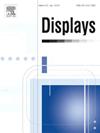Uniform-reference threshold-dynamic skipping for video compressive sensing
IF 3.7
2区 工程技术
Q1 COMPUTER SCIENCE, HARDWARE & ARCHITECTURE
引用次数: 0
Abstract
Block-based Compressive Sensing (BCS) can complete the compression of original signal during the sampling process, and thus reduce the computational burden at the encoder. BCS is suitable for some scenarios where encoding-end resources are limited, such as applications in the field of drone photography. For video signals, there is a high similarity between adjacent frames, so some researchers have proposed to perform block skipping at the encoder under the GOP-BCS framework to further compress the data that needs to be transmitted to the decoder. The reference and selection of skip-blocks are related to the reconstruction quality of the decoder and the compression ratio at the encoder. This paper proposes a Uniform-reference Threshold-dynamic Skipping (UTS) algorithm. Firstly, the proposed algorithm sets a dynamic threshold to select skip-blocks, which is suitable for video sequences with different motion variations. Secondly, in a general GOP framework, keyframes and prime non-keyframe in the middle are used as reference frames, so that the reference frames are uniformly distributed, which can provide accurate skip-block reference for more non-keyframes. At the same time, a high threshold is set for the prime non-keyframe to select skip-blocks to ensure its reliability as a reference frame and further improve the skipping ratio. The experimental results show that compared with the state-of-the-art algorithms, the proposed algorithm has a higher skipping ratio and effectively reduce the energy consumption of signal transmission when the same reconstruction quality is required at the decoder.
视频压缩感知的均匀参考阈值动态跳变
基于块的压缩感知(BCS)可以在采样过程中完成对原始信号的压缩,从而减少编码器的计算负担。BCS适用于一些编码端资源有限的场景,如无人机摄影领域的应用。对于视频信号,相邻帧之间具有很高的相似性,因此有研究者提出在GOP-BCS框架下在编码器处进行跳块,进一步压缩需要传输到解码器的数据。跳码块的参考和选择关系到解码器的重构质量和编码器的压缩比。提出了一种均匀参考阈值-动态跳变(UTS)算法。首先,该算法设置了一个动态阈值来选择跳块,适用于不同运动变化的视频序列;其次,在通用GOP框架中,将关键帧和中间的素数非关键帧作为参考帧,使参考帧均匀分布,可以为更多的非关键帧提供准确的跳块参考。同时,对主要的非关键帧设置高阈值来选择跳过块,以保证其作为参考帧的可靠性,进一步提高跳过率。实验结果表明,与现有算法相比,该算法在解码器要求相同重构质量的情况下,具有更高的跳变率,有效降低了信号传输的能量消耗。
本文章由计算机程序翻译,如有差异,请以英文原文为准。
求助全文
约1分钟内获得全文
求助全文
来源期刊

Displays
工程技术-工程:电子与电气
CiteScore
4.60
自引率
25.60%
发文量
138
审稿时长
92 days
期刊介绍:
Displays is the international journal covering the research and development of display technology, its effective presentation and perception of information, and applications and systems including display-human interface.
Technical papers on practical developments in Displays technology provide an effective channel to promote greater understanding and cross-fertilization across the diverse disciplines of the Displays community. Original research papers solving ergonomics issues at the display-human interface advance effective presentation of information. Tutorial papers covering fundamentals intended for display technologies and human factor engineers new to the field will also occasionally featured.
 求助内容:
求助内容: 应助结果提醒方式:
应助结果提醒方式:


